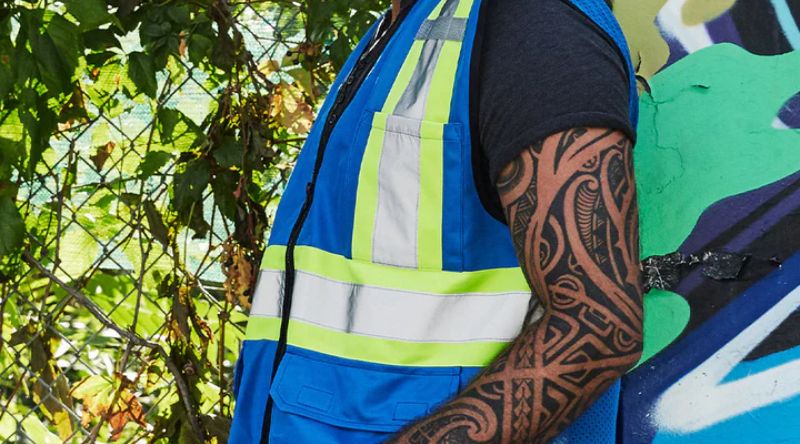
Understanding the distinction between reflective and retroreflective materials is critical for various applications, from safety clothing to traffic signs. Although both materials can improve visibility in low-light conditions, their operational principles and physics differ significantly.
Let’s look at the differences between reflective and retroreflective and explore how they enhance visibility in various settings.
What Is Reflective?
Reflective materials reflect light in various directions. They can improve an object’s visibility by bouncing back the incoming light from a source, such as a car’s headlights or streetlights. Materials used for reflective purposes can be anything with a shiny surface, including metals, plastic films, and glass beads. The shiny surface reflects light to its source, creating a bright and noticeable effect.
Reflective materials are common in safety clothing, road signs, and bike reflectors. They come in different colors, including white, yellow, red, and orange, making them easily distinguishable against various backgrounds. These materials also work well in both low-light and bright-light conditions, making them versatile for different environments.
What Is Retroreflective?
Retroreflective materials are reflective materials that reflect light back to the source in a parallel path. Unlike regular reflective materials, which scatter the reflected light in various directions, retroreflective materials have tiny glass beads or prisms that redirect the light straight back to its source. This unique property makes retroreflective materials highly effective in improving visibility, especially in low-light conditions.
These materials are commonly used in traffic signs and safety clothing for workers who operate at night or in low-light settings. They also come in different colors and can reflect multiple light colors, making them ideal for various applications. Retroreflective materials are more efficient at reflecting light than reflective materials, making them highly effective for enhancing visibility.
How Do They Work Together?
Reflective and retroreflective materials can work together to improve visibility in different settings. For instance, traffic signs often use reflective and retroreflective materials with microprismatic technology to improve their effectiveness. The top layer of the sign consists of retroreflective material that redirects light back to its source. In contrast, the bottom layer uses reflective material to enhance visibility under bright lights.
Additionally, some safety clothing combines reflective and retroreflective materials to improve workers’ visibility in various environments. Combining these two materials, such as a neon yellow shirt with reflective silver stripes, ensures the worker is visible from all angles, making them safer in low-light conditions.
Both materials are essential in improving visibility in low-light conditions. By understanding the differences between reflective and retroreflective and how they work together, we can better appreciate their importance in enhancing safety and visibility in different applications.
If you need traffic safety vests or other high-visibility equipment for your workplace, Hi-Vis Safety can provide top-quality products to keep your workers visible and safe. Choose from various reflective and retroreflective clothing options, including vests, jackets, shirts, and more. Contact us today to learn more about our products and how we can help improve safety in your workplace.
